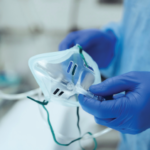
Image Credit: Petr Vaclavek/shutterstock.com
SAN FRANCISCO—Metabolomics could one day be a treasure map of information about inflammation in rheumatic disease. There are many metabolic pathways to pursue for clues on how to reverse this damaging process. “All of these signaling pathways are interrelated and affect each other,” said Douglas J. Veale, MD, director of translational research at Dublin Academic Medical Centre and a consulting rheumatologist at St. Vincent’s Hospital in Dublin, Ireland. “No one, single signaling pathway is responsible for inflammation.”
Dr. Veale was one of a panel of speakers who delved into metabolomics’ role in inflammatory arthritis at the 2015 ACR/ARHP Annual Meeting on Nov. 7, 2015. Topics included glycolysis, hypoxia and metabolomics’ role in both acute and chronic inflammation. Researchers are keen to learn more about how manipulating cell metabolism may, in the future, facilitate the development of more effective therapies.
Glucose Metabolism
“Metabolic reprogramming of cells is essential to support immune function,” explained Jeffrey Rathmell, PhD, associate professor of pharmacology, cancer biology, and immunology at the Duke University School of Medicine in Durham, N.C. Many therapies for autoimmune disorders are metabolic inhibitors, he said.
One important metabolic pathway is glycolysis, Dr. Rathmell said. T lymphocytes that drive autoimmunity produce energy through metabolism and require glucose as fuel.
“Why do cells go through the change from an oxidative state then to aerobic glycolysis?” Cancer cells especially go through aerobic glycolysis, a process that includes increased uptake of glucose. “And it’s not just glucose. T cell activation also broadly reshapes the metabolome,” Dr. Rathmell said. T cell stimulation strongly upregulates this glucose uptake.
It’s still unclear how glycolysis affects cell survival, but one area of research is the glucose transporter family, especially GLUT1, said Dr. Rathmell. Cells need GLUT1 to proliferate normally. GLUT1 is rapidly induced and requires activation of the PI3-kinase pathway. It promotes human T cell growth and proliferation, and CD4 T cells will go on to differentiate into metabolically distinct effector or regulatory subsets that play a role in the inflammatory response.1 Each subset has different characteristics, and glycolysis is highest in Th1 and Th17.
T-regulatory and T-effector cells rely on distinct metabolic mechanisms, and Glut1 plays an important role in these processes, he said. Induced T-effector, but not T-regulatory, cells are affected by a deficiency of Glut1. T cells require Glut1 for the production and expansion of inflammatory cytokines in inflammatory bowel disease, for example.
At the end of glycolysis, glucose is converted to pyruvate. Th17 cells drive pyruvate oxidation, said Dr. Rathmell. Pyruvate dehydrogenase kinase (PDHK) and dichloroacetate (DCA) selectively affect the Th17 and T-regulatory CD4 subsets. Glycolysis is sort of a “metabolic switch” where we see different T cells either increase or decrease.
“Clinically, it is still to be determined how much metabolic pathways can be manipulated, but things we are doing are affecting those pathways, and that’s why we have the outcomes,” he said. “Different cell types have different abilities to adapt,” so interventions like ketogenic diets may one day be used to manipulate metabolic pathways. “If nutrients outside cells change, then cells have to change to cope, but we don’t yet understand the connections.”
Oxygen Supply
According to Dr. Veale, although glucose may fuel some of the metabolic pathways involved in inflammation, oxygen is another driving force. “If you were sitting on top of a mountain right now, you’d be hypoxic and feel dizzy, nauseous and have a headache,” he told the audience at the sea-level conference. “Our cells’ ability to deal with hypoxia has evolved over billions of years.”
Dr. Veale also said that hypoxia plays a role in angiogenesis in early inflammatory arthritis. Cells can move across the endothelial membrane. The protein VEGF is stimulated by low levels of oxygen during this process. “As oxygen levels go up, they form a tight association between pericytes and endothelial cells,” which signals transcription. VEGF plays a role in RA, for example, making endothelial cells more permeable and stimulating angiogenesis.
According to Dr. Veale, you might see blood vessels at different levels of maturity in a hypoxic joint in RA. This allows for the egress of inflammatory cells. In inflammatory arthritis, blood vessel function is not normal. In joints affected by osteoarthritis, there is mature vasculature. Where there is inflammation, such as in psoriasis with active skin disease, we see immature vasculature that improves after treatment.
VEGF and another protein, Ang2, are found in high levels in synovial fluid of inflamed joints, and they induce Notch-1 signaling in endothelial cells. Notch-1 also mediates VEGF- and Ang2-induced angiogenesis, and it increases the effect of these proteins.
Hypoxia can be seen in some samples of inflamed synovial tissue. In fact, some levels of pO2 are extremely low in some patients’ tissue, and in cases of severe inflammation, there are many immature blood vessels. As oxygen levels go up, blood vessels in inflamed tissue begin to look more normal, he said.
Hypoxia is quite pronounced in psoriatic arthritis compared with RA. Angiogenesis is dysregulated in inflamed joints. “These blood vessels are not delivering enough oxygen to cells to overcome that hypoxic situation,” said Dr. Veale. Hypoxia not only induces angiogenesis but also pro-inflammatory mediators, and the invasion and migration of fibroblasts. This process is Notch dependent. “If we knock down the Notch, we can inhibit hypoxia-induced inflammatory mechanisms,” he said.
Many transcriptive factors are involved in cellular and other changes that occur due to hypoxia, including hypoxia-inducible-factor 1-alpha (HIF-1α), which is significantly upregulated due to a lack of oxygen. Prolyl hydroxylase domain proteins, including PHD2, which is prominent in RA, are an important area of research. When PHD2 is knocked down in RA, you see greater activation of HIF-1α, said Dr. Veale.
Interventions, such as TNF inhibitors, can reduce blood flow and metabolic activity in inflamed joints, including affecting oxygen levels, he said.2 These drugs alter cellular bioenergetics, and GLUT1, that key marker of metabolic activity in joints, goes down.
Energy Consumption
Inflammation uses up a lot of energy, said Stephen Young, PhD, FHEA, Reader in Rheumatology at the Institute of Inflammation and Ageing at the University of Birmingham in the U.K. “What’s using this energy?” Lymphocytes, resting T cells, and activated T cells are possible culprits. In sepsis or in high levels of trauma, you also see high energy levels. During sepsis, protein and energy metabolism are accelerated, and leucine and glucose levels go up, too. “Individual metabolites influence or vary in chronic disease.” For example, glutathione, a major antioxidant, is depressed in RA patients’ serum.
Metabolism leaves behind important clues to understand the inflammatory process. “Genomics and proteomics tell you what might happen, but metabolomics tell you what is happening or what did happen,” said Dr. Young. After an initial trauma, metabolomic analysis of blood serum shows a distinct, inflammation-related trajectory in metabolites following that injury, he said. In early arthritis patients, metabolites correlate with C-reactive protein levels in the blood, and these changes are linked to the inflammatory response. Creatinine is one possible important biomarker of this metabolic process.
After some acute damage to tissue, catabolic processes dominate, and then anabolism kicks in for tissue repair, followed by recovery. With the acute inflammation you see after a trauma or burn, there are both on and off processes, Dr. Young said. After a severe burn, for example, there are high levels of specific metabolites, and “there is some evidence for glycolysis and lipolysis in burn patients.” These may be markers of immune cell involvement or hypoxic metabolism in the damaged tissues, he said.
Metabolites could help predict survival rates after a severe burn, and “if you could work out which metabolic pathways are involved, you may be able to intervene and change them to improve survival,” he said.
What about chronic inflammation? In diseases like RA or uveitis, metabolic changes tell us a great deal, too. Macrophage activation may determine the metabolic profiles in the blood in inflammatory disease, he said. Other cells contribute too, since synovial fibroblasts in RA joints show a different metabolic profile than normal controls.
“RA cells produce high levels of lactate, which suggests they are switching on glycolysis,” said Dr. Young. This process is not affected by oxygen levels, he added. “Fibroblasts isolated from a hypoxic environment retain an inflammatory and glycolytic metabotype in vitro,” and this is related to raised CRP levels in those patients.
Metabolic fingerprinting has already revealed important clues about disease course and treatment responses, Dr. Young said.3
With more research in this area, “there may be some predictive value of metabolites in early RA, telling us who will go on to chronic disease and who will have self-limiting disease, and it could also predict different responses to different drugs.”
Susan Bernstein is a freelance medical journalist based in Atlanta.
References
- Wofford JA, Wieman HL, Jacobs SR, et al. IL-7 promotes GLUT1 trafficking and glucose uptake via STAT5-mediated activation of Akt to support T-cell survival. Blood. 2008 Feb 15;111(4): 2101–2111. Epub ahead of print.
- Biniecka M, Kennedy A, Ng CT, et al. Successful tumor necrosis factor (TNF) blocking therapy suppresses oxidative stress and hypoxia-induced mitochondrial mutagenesis in inflammatory arthritis. Arthritis Res Ther. 2011 Jul 25;13(4):R121.
- Young SP, Kapoor SR, Viant MR, et al. The impact of inflammation on metabolomics profiles in patients with arthritis. Arthritis Rheum. 2013 Aug;65(8):2015–2023.


